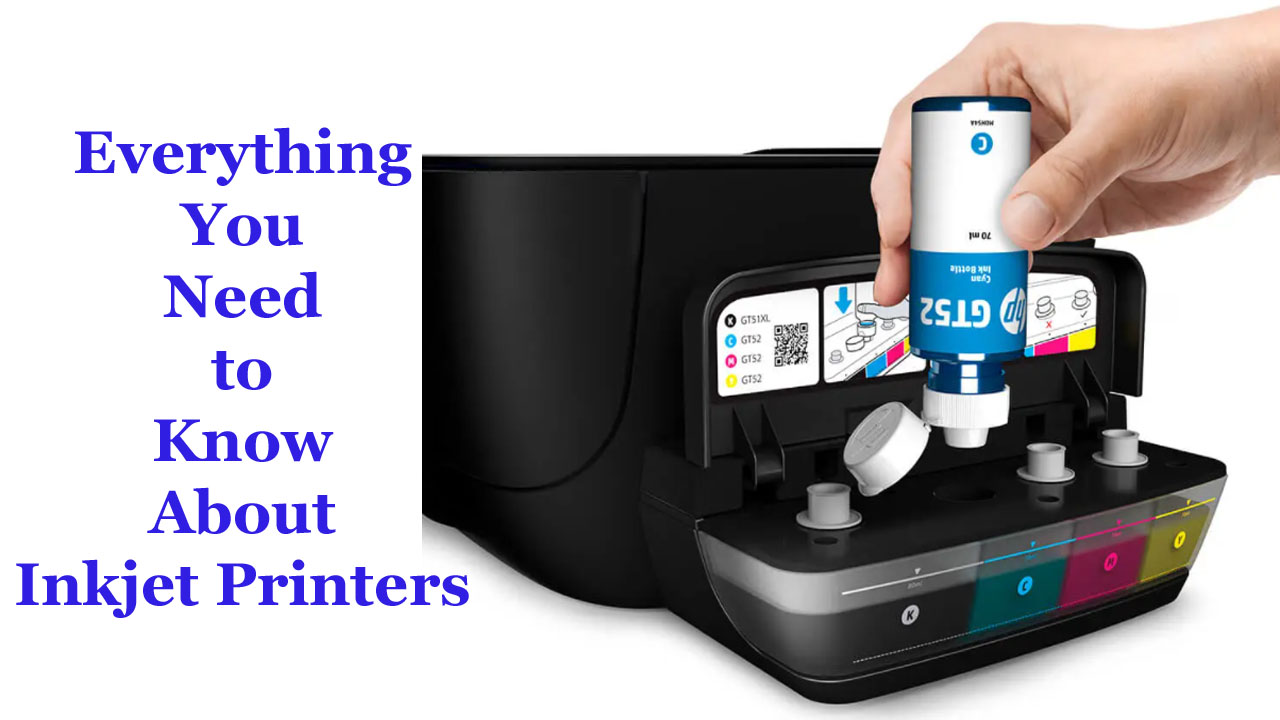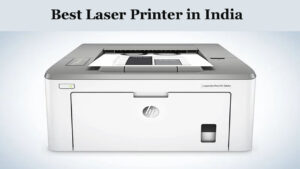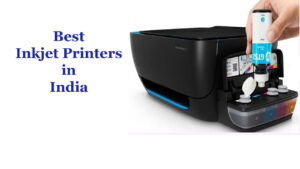Images and document copies are essential to many people, whether personal or commercial. Regardless of the use, everyone wants clear and high-quality resolution to the pictures or text they print out onto the blank paper sheets. So, it is vital to use the right kind of printer for the best result.
The inkjet printer is an interesting choice here, and many users find it a suitable choice. It provides high-quality printouts, is relatively easy to use, and is available at a reasonable cost. However, before purchasing this product, it is crucial to know more about this type of printer to make your final purchasing decision.
Here, we discuss everything related to Inkjet printers.
Inkjet Label Printer- An Overview
Inkjet printers work with liquified ink, where the propelling tiny ink droplets print the image onto paper. You can use this printer to print on different types of material besides sheets of paper, like plastic, cardboard, and non-woven fabrics.
The ink droplets dry up rapidly after application due to a specialized coating put on the substrate ahead of time. The printouts are resistant to water and harsh chemicals so that the imprint stays intact longer. This depends on the coating and ink combination.
Different types of inkjet printer models are available that come with varying functions. Each version has a specific volume, print speed, supported material type, and costs.
Technologies Used in Inkjet Printers
There are specific technologies that run the inkjet printer types. Here are the main two variations.
Continuous Inkjet (CIJ)
This technology is the older version that works on these printers. Here, the ink droplets spray onto the material at high speed (e.g., 20 m/s). Typically, the distance of the print from the substrate is longer.
The drop ejection speed is suitably fast. You will not see many issues with the nozzle clogging up or failing here. It works well with volatile solvents like alcohols and ketones. So, choose printers with this type of operation if you want printouts at a high frequency.
Drop-on-Demand (DOD)
There are two types to their technology- piezoelectric DOD and thermal DOD.
- The former works with piezoelectric materials placed behind the nozzles inside the ink-filled printer chambers. The material changes and creates a pressure pulse within the fluid; this pushes ink droplets from the nozzle to begin the printing.
- On the other hand, the latter uses the thermal excitation process to move ink droplets. There are many small-scale chambers in the cartridges that come with photolithography-enabled heaters. The printer passes a current through these heaters, pushing droplets out of the chambers during the application.
Type of Ink- What Works Best With Inkjet Printers?
Another critical point to consider about the inkjet printer operation is the ink types that it works with.
- Aqueous Ink- Generally, people opt for an aqueous ink type for printouts, and it is a common choice for homeowners using the printers. This ink type is a mixture of dyes/pigments, glycol, and water. So, the cost of the aqueous ink is relatively low.
- UV Curable Ink– UV curable ink is another type of ink commonly used in inkjet label printers. This is made with acrylic monomers and an initiator package. The UV lights dry it up after the printer prints with this ink.
- Solvent Ink– Businesses using inkjet printers invest in solvent inks composed of organic chemical compounds with high vapour pressure and volatile organic compounds. The pigment is comparatively more resilient in this type of ink and can print clearly on any surface type.
Types of Inkjet Printers
Two leading printer types are available under the inkjet category, although other variations are available. However, they mainly are special-case options with distinctive uses, e.g., SOHO printers for printing digital photos.
- Professional printers– As the name explains, these inkjet printers are mainly used in commercial operations. They come in varieties like wide format and page width-based.
- Deskjet printers– People buy this low-intensive version for using them in their office or at home. They are more suitable for normal and small-scale printing processes.
Features of Inkjet Printers
Particular specifications make it easier to recognize inkjet printer types and use them accurately. Here are these salient features.
- These printers do not make much noise during operation, unlike other types like dot-matrix printers.
- They have a small printing head. Plus, these printers have a light body and are easier to carry around.
- Using compact ink cartridges with inkjet printers will get photos with vivid colours and excellent clarity.
- These printers are generally capable of producing top-quality, high-resolution digital printouts.
- Unlike many other options, the cost of inkjet printers is relatively customer-friendly. Maintenance costs can be high but not extremely expensive.
- There are particular inkjet printers for industrial-level use with a 3D printing feature.
- Currently, there are some types of modern inkjet printers available with multi-functional capabilities. Therefore, users can scan, print, fax, and copy these inkjet printer types.
Advantages of Using the Inkjet Printers
The following are the best qualities of inkjet printers.
- The cost of inkjet printers is not exceptionally high, especially compared to other high-quality options in the market, like laser printers. The ink cartridges useful for these printers do not cost very high either; it is an economical printer choice for the long term.
- These printers operate at a fast rate, with no warm-up period necessary. So, it is a suitable choice for people who need fast printouts.
- It is straightforward to replace the cartridge in these printers after they run out. Plus, ink refills are available easily, so you can avoid buying new cartridges multiple times.
- The inkjet printers are suitable for printing high-resolution and vibrant images. Therefore, it is a suitable choice if you want to print images or photographs.
- These printers have a smaller size, so they are very easy to store anywhere.
- The printouts that would come out of these printers would have good detail accuracy. The printer meshes solid hues well.
- You can easily print out the images you want on any paper type you need. For example, it works well on bond papers, regular A4 sheets, bank paper, and glossy paper. Plus, you can print on soft fabric types with it as well.
Disadvantages of Using the Inkjet Printers
While there are many benefits of these printers, there are some areas where they fail to meet the mark. Here are some of these cons.
- The ink that the printer prints with include water content. So, when the ink dries, you might have a problem maintaining it for longer. Also, smudging is another drawback while printing with this product, primarily if you inappropriately handle the paper.
- Generally, the amount of ink available in the cartridges can last for a few hundred sheets of paper. Thus, if you print out many papers per day at your office, you have to keep refilling the ink or replace the cartridge frequently.
- Inkjet printers use a bidirectional manner of printing and are relatively fast. But laser printers are comparatively faster.
Conclusion
Overall, inkjet printers are beneficial for regular printing or colour-filled printout needs. It is a suitable choice for commercial and personal use and can print efficiently on different types of material. However, the quality of the printout and your costs maintaining the printer can vary for different models.
Carefully check out the available variations and how you plan to buy the model functions. Then, you can make the right decision about the correct type of product to purchase.



